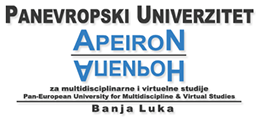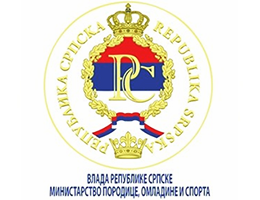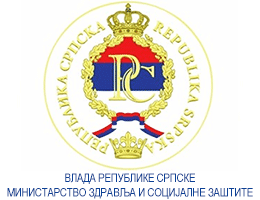Differences in the Prevalence of Postural Disorders of the Spine in Lower Grades of Elementary School Students
Volume 15, Issue 1 (2025)
Volume 15, Issue 1 (2025)
Differences in the Prevalence of Postural Disorders of the Spine in Lower Grades of Elementary School Students
Abstract:
The study was conducted on a sample of 146
respondents - lower grade elementary school students,
chronological age 7 - 11 years old, in the urban area of the
city of Banja Luka. The total sample of respondents was
divided into five subsamples according to chronological
age. The main objective of the study was to determine the
frequency and structure of postural disorders of the spinal
column in the studied sample of subjects, as well as the differences
in the prevalence of postural disorders with respect
to the chronological age of the subjects, using a transversal
cross-section. To assess the prevalence and differences
in postural disorders of the spinal column, disorders in the
sagittal plane (kyphosis and lordosis) and disorders in the
frontal plane (scoliosis) were analyzed. The degree of postural
disorders of the spinal column was determined using
Contingency Tables - calculating frequencies (F) and percentages
(%). The statistical significance of the differences
in the prevalence of postural disorders of the spinal column
in the sagittal (kyphosis and lordosis) and frontal planes
(scoliosis) in lower elementary school students was determined
using Univariate Analysis of Variance (ANOVA), and
the differences in relation to their chronological age for
each type of disorder were determined using the analysis
of the results of the Post Hock comparison test. The degree
of postural disorders of the spinal column determined by
Contingency Tables - by calculating the frequency (F) and
percentage (%) indicates a significant percentage of spinal
column disorders (kyphosis 21.2%, scoliosis 19.9%, lordosis
19.2%), mainly in the first degree of deformation (minor
deviation from the normal status), which allows for correction
of the condition with the application of adequate corrective
exercises in working with students of this age. The
results of the univariate analysis of variance (ANOVA) show
that the prevalence of kyphosis is statistically significant at
the level of statistical significance p<.007 and scoliosis nificance
of the prevalence of lordosis in the studied sample
of students was not determined (p= .255). The results of the
LSD Post Hock comparison test show that there is a statistically
significant difference in the prevalence of kyphosis and
scoliosis between groups of students with regard to their
chronological age.
Keywords:
spinal column, postural disorders, differences, students, Post Hock test.
Full Text:
References:
Bajrić, O., Lolić, S., Perić, R., Kovačević, D. (2012). Učestalost deformiteta kičmenog stuba kod učenika starijih razreda osnovne škole. Sportske nauke
i zdravlje, str.175-181. [in Serbian]
Bajrić, O., Bajrić, S., Lolić, D., Srdić, V. (2011). Regresiona povezanost nekih pokazatelja narušenog posturalnog statusa i skolioze. Zbornik sa XV
Međunarodnog skupa ’’FIS komunikacije 2011’’ u sportu, fi zičkom vaspitanju i rekreaciji’’ str. 80. Niš: Fakultet sporta i fizičkog vaspitanja
Univerziteta u Nišu. [in Serbian]
Bjeković, G., Arnaut, Đ. (2006). Utvrđivanje deformiteta kičmenog stuba kod učenika u srednjoj školi “Ivan Goran Kovačić” u Herceg Novom. “Sport-
Mont” br. 10-11. [in Serbian]
Bogdanović, Z. (2008). Uticaj programiranog korektivnog vježbanja na kifotično držanje tijela kod osnovnoškolske populacije. Podgorica, „Sport-Mont“.
538-544. [in Serbian]
Bozoljac, J., Mikić, B., Bojić, A., Petrović, Z., Petrović, N., Bojić, S. (2023). Razlike u deformitetima kičmenog stuba učenika I do III razreda osnovne
škole. U: Zbornik 7. Međunarodne konferencije Sportske nauke i zdravlje, str. 190-198. Banja Luka: Panevropski Univerzitet Apeiron. [in Serbian]
Hodžić, Z., Bijeković, G., Mikić, B., Bratovčić, V. (2008). Early Verticalisation and Obesity as Risisc Factors for Development of Flat Feet in Children.
Acta Kinesiologica International Scientific Journal on Kinesiology, 2008; 2(1).
Kosinac, Z., Danović, I. (2007). Povezanost između nekih pokazatelja nepravilnog tjelesnog držanja i skolioze u djece juvenilne dobi. Život i škola br.17.
[in Serbian]
Kosinac, Z. (2011). Morfološko-motorički i funkcionalni razvoj djece uzrasne dobi 5. do 11. godine. Sveučilište u Splitu. Split. [in Croatian]
Lolić, S., Bajrić, O., Lolić, V. (2012). Prisustvo deformiteta donjih ekstremiteta kod učenika osnovnoškolskog uzrasta. Zbornik radova 8.Međunarodne
konferencije „Manadžment u sportu“, str. 182-188. Beograd: Alfa Univerzitet. [in Serbian]
Lovrić, A. (2015). Metodički postupci korekcije držanja tijela kod učenika nižih razreda osnovne škole. Master rad. Edukacijski fakultet Univerziteta u
Travniku. [in Serbian]
Nikšić, E., Rašidagić, F., Beganović, E., Nemeth, Z. (2015). Examination of the differences in the representation of deformities of individual body parts in
initial and final measuring. Sport Science 12 (2019) Suppl 1: 36-45.
Mihailović, N., Zečević, M. (2003). Rana detekcija skolioze u školske djece: razlike prema polu i uzrastu kod sistematskog pregleda. Profesional Article
Medicus br.7, 32-34. [in Serbian]
Nikšić,E., Rašidagić, F., Beganović,E., Németh, Z. (2019). EXAMINATION OF THE DIFFERENCES IN THE REPRESENTATION OF DEFORMITIES
OF INDIVIDUAL BODY PARTS IN INITIAL AND FINAL. Sport Science 12 (2019) Suppl 1: 36-45
Nikšić, E., Mahmutović, I., Rašidagić, F. (2015). Postularni poremećaji kičmenog stuba kod učenika razredne nastave u odnosu na pol. Zbornik radova sa
5. Međunarodne konferencije Sportske nauke i zdravlje, str. 100-111. Banja Luka: Panevropski Univerzitet Apeiron. [in Serbian]
Paušić, J., Čavala, M., Katić, R., (2006). Relations of the Morfological Charactheristic Latent Structure and Body posture indicators in children aged 7-9
years. Colegium Antropologicum 30 (3), 621-627. [in Serbian]
Protić-Gava, B., Krneta, Ž. (2010). Posturalni status djece mlađeg školskog uzrasta 4 okruga Vojvodine. Novi Sad. [in Serbian]
Skender, N., Kurtović, N., Čolakhodzić, E., Đedović, D. (2018). Objektivnost procjene deformiteta kralježnice kod učenika nižih razreda osnovne. Zbornik
radova sa 8. Međunarodne konferencije Sportske nauke i zdravlje, str. 244-250. Banja Luka: Panevropski Univerzitet Apeiron. [in Serbian]
Šukov, J. (1986). Prevencija i korekcija lošeg držanja i tjelesni deformiteti kičmenog stuba uz pomoć adekvatnih kompleksa vježbi kod učenika osnovnih
škola. Doktorska disertacija. Skoplje. [in Serbian]
Živković, D.(1987). Uticaj programirane nastave fizičkog vaspitanja na poremećaje kičmenog stuba u frontalnoj ravni. Doktorska disertacija. Niš: Filozofski
fakultet. Nastavno-naučna grupa za fizičko vaspitanje. [in Serbian]
Živković, D., Karaleić, S. (1996). Relacije lordotičnog lošeg držanja i morfoloških karakteristika djece predpubertetskog perioda. FIS Komunikacije, Peti
međunarodni simpozijum. Niš. [in Serbian]






